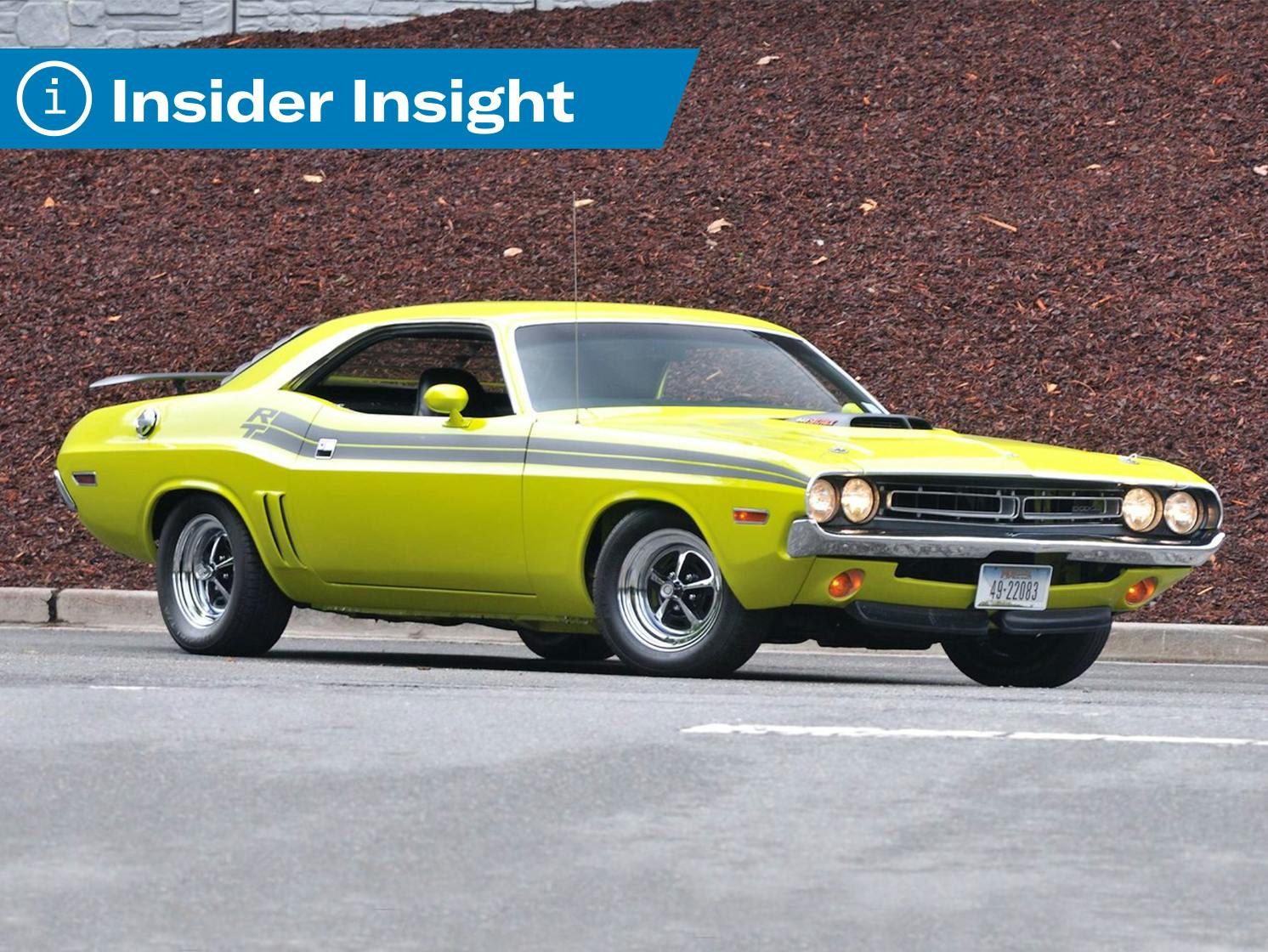Media | Articles
Do Mopar’s famously wild colors bring more money at auction?

Muscle cars, the darlings of the classic car market of the early 2000s, are front and center once again. Our latest Hagerty Price Guide update has revealed which models and specs are the most sought-after. Many are what you’d expect: Big-blocks bring more, as do convertibles in many cases. We have never, however, taken a deep dive into the most visible option on 1960s muscle cars—their paint colors.
The High-Impact color palette of 1960s and ’70s Mopar in particular typified the free spirit of their era and frequently cross auction blocks. The extreme colors sometimes clash with the traditional muscle car image (we’re looking at you, FM3 Moulin Rouge/Panther Pink) but can be valuable because of their rarity or the additional outrageousness. Looking through years of auction results, we can find out which hues are the ones to have and which ones can be overlooked.

Mopar vehicles make an excellent study not just for their vibrance but also for their informative VINs, which are far from a given in pre-1981 vehicles. By using our decoder, we can get rid of “noise” in the data, such as cars come to sale with non-original engines and, presumably, bring less money.
Starting with auction transactions as far back as 2010, we used the VIN to determine the correct Hagerty Price Guide values at the date of the transaction. Next, we accounted for condition using our 1 to 4 rating scale, and adjusted for four-speeds or automatics (where applicable). In addition to excluding engine swaps, we knocked out anything with major modifications or rarely found sunroofs. That left us with nearly 1300 transactions labeled with the color the car was painted at the time of the sale. (We didn’t distinguish cars that were repainted a correct but non-original color from those that wore their as-originally built color.) We then calculated the premium or discount of each color from that set.
What did we find? Hope you like yellow—or more precisely Citron Yella/Curious Yellow. It netted the largest premium at 17 percent. More generally, the rare colors tend to be most valuable. In contrast, the more common EV2 Tor-Red/Hemi Orange has almost no premium relative to the overall market. However, commonly found FC7 In Violet/Plum Crazy carries a premium. Who knew that purple muscle cars were so desirable?
Marketplace
Buy and sell classics with confidence
Outside of the High-Impact colors, some of the darker colors tend to be worth less, while the more vibrant bright colors are often worth a bit more. Here, rarity doesn’t seem to play a role. Uncommon FT6 Burnt Tan/Dark Tan and FY4 Citron Mist/Light Gold aren’t that valuable, while common EB5 Blue Fire/Bright Blue is more desirable than average.
Some models, engines, and body styles tend to wear certain colors better than others. We invite you to see how the market views your favorite configuration in the interactive app below. Note that in both of the static charts above the overall market average is subtracted out, but the interactive chart below does not have that adjustment.
So, yes, paint color does matter, at least when it comes to the values of Mopar muscle. Of course, the reason these paint colors are fun in the first place is that they allow for personal expression. Don't go respraying your Sublime Challenger Panther Pink on my account—especially since my favorite Mopar color is Turbine Bronze Metallic.
Bonus:
Wondering how often a particular color has sold at auction since 2010? Here are the most and least common:
For a dose of collector car market analysis in your inbox every Sunday, sign up for the Hagerty Insider newsletter.











